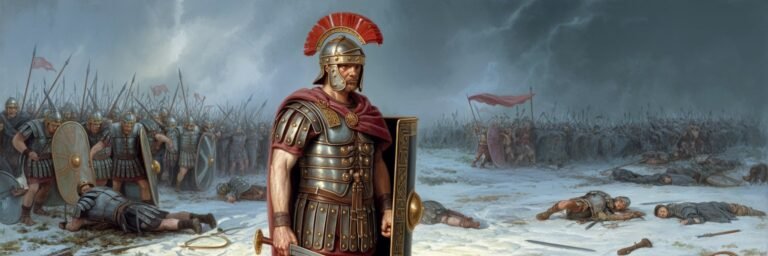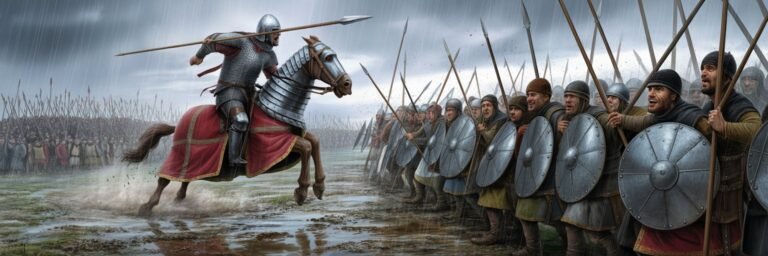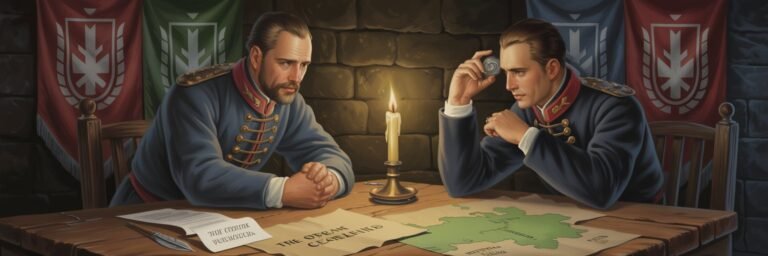INTRODUCTION
The saga of warfare is a complex tapestry woven with threads of ambition, power, loyalty, and deception. This complex weave, laden with political intrigue and power struggles, echoes through time with its profound influence on historical outcomes. The Battle of Cannae in 216 BC, the Hundred Years’ War’s Battle of Agincourt in 1415, and the American Revolutionary War’s Battle of Saratoga in 1777 provide a striking perspective on the intricate dance of power and politics in the battlefield. These pivotal battles bring forth a compelling narrative of the defining role of political intrigues and machinations in shaping global history.
HISTORICAL BACKGROUND
To understand the flavor of realpolitik in the battleground, we venture first to the Battle of Cannae, where political tactician Hannibal, a Carthaginian general, famously used the double envelopment tactic to defeat a significantly larger Roman army. The stratagem, along with the political maneuverings of Hannibal, caught the Romans off-guard and resulted in a disastrous defeat for Rome, a defining moment in the Second Punic War.
Next, we navigate the volatile terrain of the Hundred Years’ War at the Battle of Agincourt, where the English King Henry V’s political acumen was a vital component in his triumphant outcome. Notoriously outnumbered, the English victory was a combined result of Henry’s shrewd battlefield tactics and strategic political machinations.
Finally, we revisit the transformative Battle of Saratoga of 1777. This marked the turning point in the American Revolutionary War, where the political ramifications of victories by the ragtag Continental Army led by General Horatio Gates shifted the balance, influencing the formal French involvement in aid, leading ultimately to American independence.
THEORIES AND INTERPRETATIONS
Theories abound on the role political intrigue played in these landmark battles. For instance, historian Theodore Ayrault Dodge posited that Hannibal’s diplomatic attempts to isolate Rome from her allies, combined with his surprising military tactics, played crucial roles in the Carthaginian triumph at Cannae.
In the case of Agincourt, cultural historian Juliet Barker has emphasized King Henry V’s diplomatic prowess as a key factor in English success. Through courting captains of influential French factions, Henry V undermined unity within the enemy, fostering discord and disillusionment that hampered the French force’s morale and effectiveness.
In the Battle of Saratoga, political scientist and historian Richard H. Kohn contended that the strategic decision by the Continental Congress to delay open warfare until securing the French alliance was an extensive influence in their victory. Such actions intertwined military thinking and political wisdom in a battle that changed the dynamics of the war.
MYSTERIES AND CONTROVERSIES
Shadowing these historical interpretations are mysteries and controversies. Regarding Cannae, a significant debate remains over how Hannibal managed to convince his varied corps, comprised of numerous African and European ethnicities, to remain loyal. In the case of Agincourt, Henry V’s commandeering of the Church’s assets not only financed the war but also instigated intense ecclesiastical controversy that lingered through decades.
The lingering controversy around Saratoga revolves around General Gates. Was he truly the brilliance behind the victory or merely a pawn in a broader political game orchestrated by the Continental Congress and foreign diplomats? These questions underscore the intricate interplay between political intrigue and the battlefield’s reality.
SYMBOLISM AND CULTURAL SIGNIFICANCE
Beyond concrete outcomes, these battles also hold significant symbolic value. Cannae is emblematic of the potential of tactical genius and political skill, presenting a lesson in the triumph of the underdog. Agincourt, on the other hand, is a symbol of nationalism and collective identity, with Henry V’s “band of brothers” speech seared into the cultural consciousness, enhanced by Shakespeare’s eponymous play. Meanwhile, Saratoga is representative of freedom and the birth of a nation, demonstrating the power of the political determination of revolutionaries to herald a new country and culture.
MODERN INVESTIGATIONS
Modern scholarship continues to delve into these battles’ dynamic dimensions. Military historians, employing the latest historical methodology and data analysis, continue their scrutiny of Hannibal’s tactics. Similarly, historians like Anne Curry question the traditional narrative of Agincourt, arguing for a less romanticized and more nuanced understanding of its socio-political dynamics. In Saratoga, a new wave of scholars, such as Dean R. Snow, are employing archeological evidence to shed fresh light on the enigmatic General Gates and the real extent of his involvement.
LEGACY AND CONCLUSION
Through the rich vein of history, the legacy of these battles resonates, shaping national narratives and identities. They stand as signal examples of how political machinations on battlefields can alter the slabs of history. These battles have etched indelibly into public imagination, each spearheading numerous variations of historical reinterpretations, pop-culture references, and academic debates. Their legacy lies in the lessons they offer: the power of strategy and tact, the importance of unity, the role of alliances, and ultimately the profound implications when political intrigue is blended into the visceral reality of war.
Within the storm and thunder of battle, these narratives underscore crucial political strategies and power struggles which have become elemental to humanity’s understanding of its past. The intricate dance of political intrigue and power struggle in the wide canvas of wars is not merely a footnote in history—it is a testament to the ever-evolving nature of strategic thinking and the enduring role of leadership, diplomacy, and decisions. The more we learn from these battles, the better we understand the complexity that shapes our collective history.



